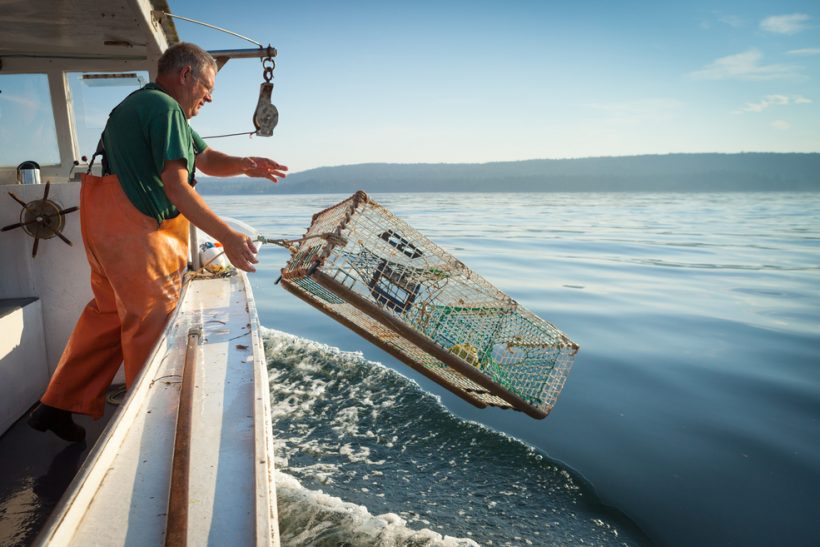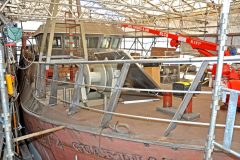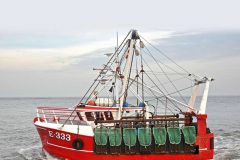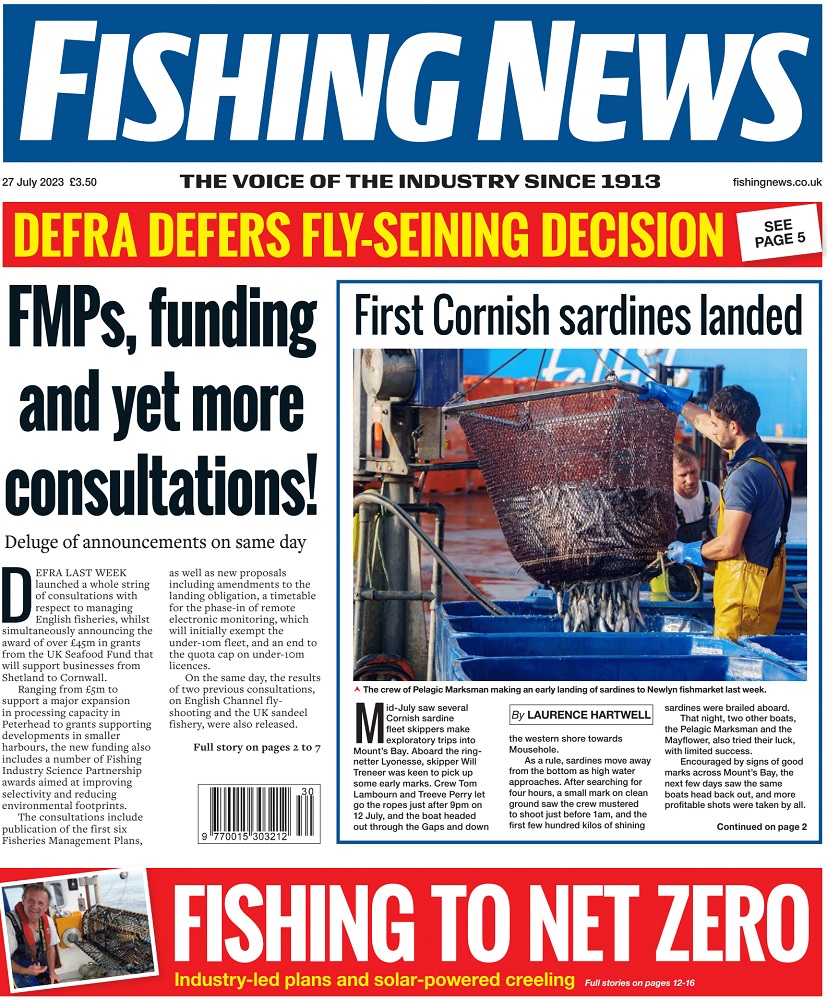Irish lobster fishermen are starting to feel the effects of the maximum landing size on their catch as reports from some fishermen state that a large part of their haul is no longer marketable, reports Pauric Gallagher.
Fishermen from a number of ports along the west coast say that at present as much as 30 % of their daily catch is over 127mm in size and that the current maximum size is far too small.
Minister for Agriculture, Food and the Marine, Simon Coveney introduced a maximum landing size for lobster of 127mm starting January 2015, aimed at ensuring the long-term viability of the fishery by protecting the stocks reproductive potential.
As part of the new measure, the first two years of operation will see fishermen get paid up to 75% of the market price for v-notching lobsters over 127mm and returning them live to sea, this is to offset potential losses during the transition to the new measure.
But a growing number of inshore fishermen are against the new legislation, citing firstly that a larger maximum size should have been tried initially, and then decreased if it looked like stock numbers were still failing to improve.
And secondly, they say releasing larger lobsters is pretty much useless until the issue of recreational/illegal fishing is dealt with first; and that returning large lobsters only to be caught by those fishing illegally was feeding the fishing without a licence ethos, leading to an ever increasing black market for lobster meat.
As the 2015 season kicks into gear, fishermen on the North West coast say that the amount of pots owned by unlicensed fishermen already on the lobster grounds is overwhelming, and finding a space to shoot their gear is a real challenge.
The Common Fisheries Policy (CFP) states, “Recreational fisheries can have a significant impact on fish resources and member states should, therefore, ensure that they are conducted in a manner that is compatible with the objectives of the CFP.”
No matter how you look at it, access to the inshore fishery for leisure and commercial fishermen is totally unbalanced at present, commercial fishermen have to meet a number of requirements including a sea fishing licence, vessel survey and carry an array of safety equipment, incurring huge costs in doing so.
On the other hand leisure persons can access the fishery without any requirements other than the obligation of non-sale of their catch.
There is currently no limit on the volume of catch or the quantity of fishing effort that may be used by leisure persons fishing for lobster and crab.
It’s also believed that many of those involved in the leisure segment are also failing to observe the statutory management measures in place for shellfish.
The introduction of similar controls to what Northern Ireland has in place would establish an all island recreational management structure, where daily catch limits and a restriction on the number of pots applies to non-commercial boats.


Irish lobster fishermen are starting to feel the effects of the maximum landing size on their catch as reports from some fishermen state that a large part of their haul is no longer marketable, reports Pauric Gallagher. Fishermen from a number of ports along the west coast say that at present as much as 30 % of their daily catch is over 127mm in size and that the current maximum size is far too small. Minister for Agriculture, Food and the Marine, Simon Coveney introduced a maximum landing size for lobster of 127mm starting January 2015, aimed at ensuring the long-term viability of the fishery by protecting the stocks reproductive potential. As part of the new measure, the first two years of operation will see fishermen get paid up to 75% of the market price for v-notching lobsters over 127mm and returning them live to sea, this is to offset potential losses during the transition to the new measure. But a growing number of inshore fishermen are against the new legislation, citing firstly that a larger maximum size should have been tried initially, and then decreased if it looked like stock numbers were still failing to improve. And secondly, they say releasing larger lobsters is pretty much useless until the issue of recreational/illegal fishing is dealt with first; and that returning large lobsters only to be caught by those fishing illegally was feeding the fishing without a licence ethos, leading to an ever increasing black market for lobster meat. As the 2015 season kicks into gear, fishermen on the North West coast say that the amount of pots owned by unlicensed fishermen already on the lobster grounds is overwhelming, and finding a space to shoot their gear is a real challenge. The Common Fisheries Policy (CFP) states, “Recreational fisheries can have a significant impact on fish resources and member states should, therefore, ensure that they are conducted in a manner that is compatible with the objectives of the CFP.” No matter how you look at it, access to the inshore fishery for leisure and commercial fishermen is totally unbalanced at present, commercial fishermen have to meet a number of requirements including a sea fishing licence, vessel survey and carry an array of safety equipment, incurring huge costs in doing so. On the other hand leisure persons can access the fishery without any requirements other than the obligation of non-sale of their catch. There is currently no limit on the volume of catch or the quantity of fishing effort that may be used by leisure persons fishing for lobster and crab. It’s also believed that many of those involved in the leisure segment are also failing to observe the statutory management measures in place for shellfish. The introduction of similar controls to what Northern Ireland has in place would establish an all island recreational management structure, where daily catch limits and a restriction on the number of pots applies to non-commercial boats.




